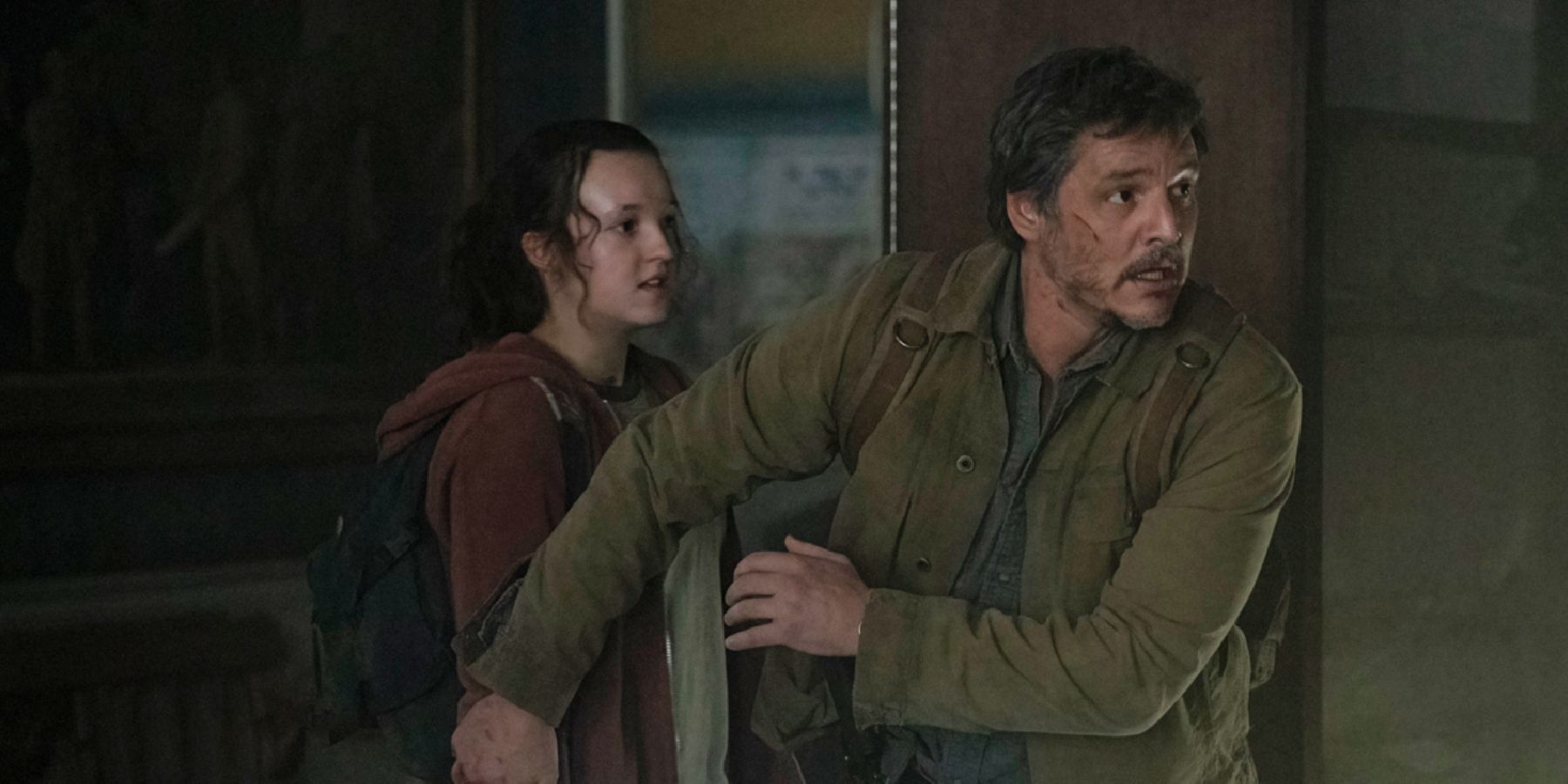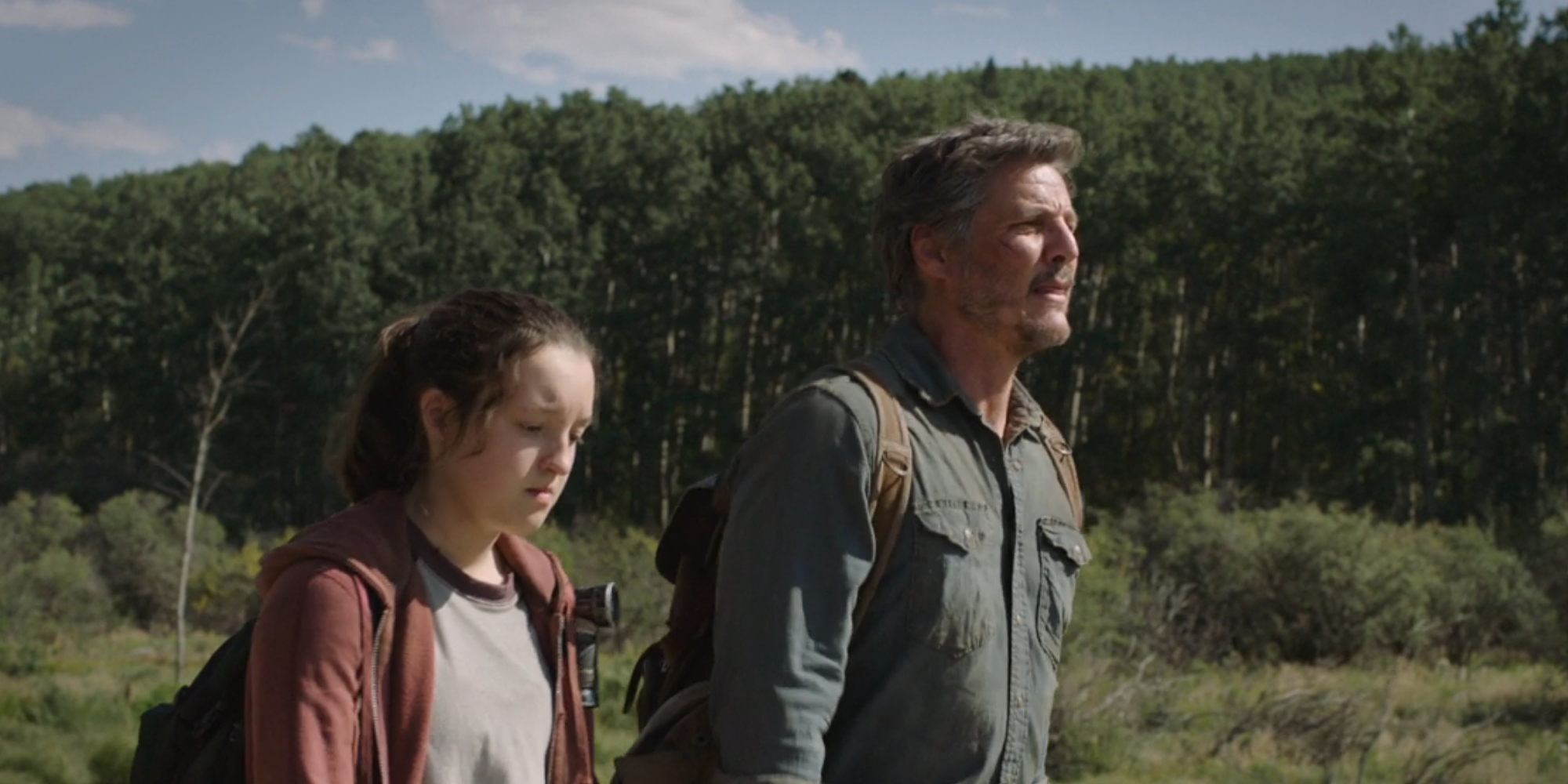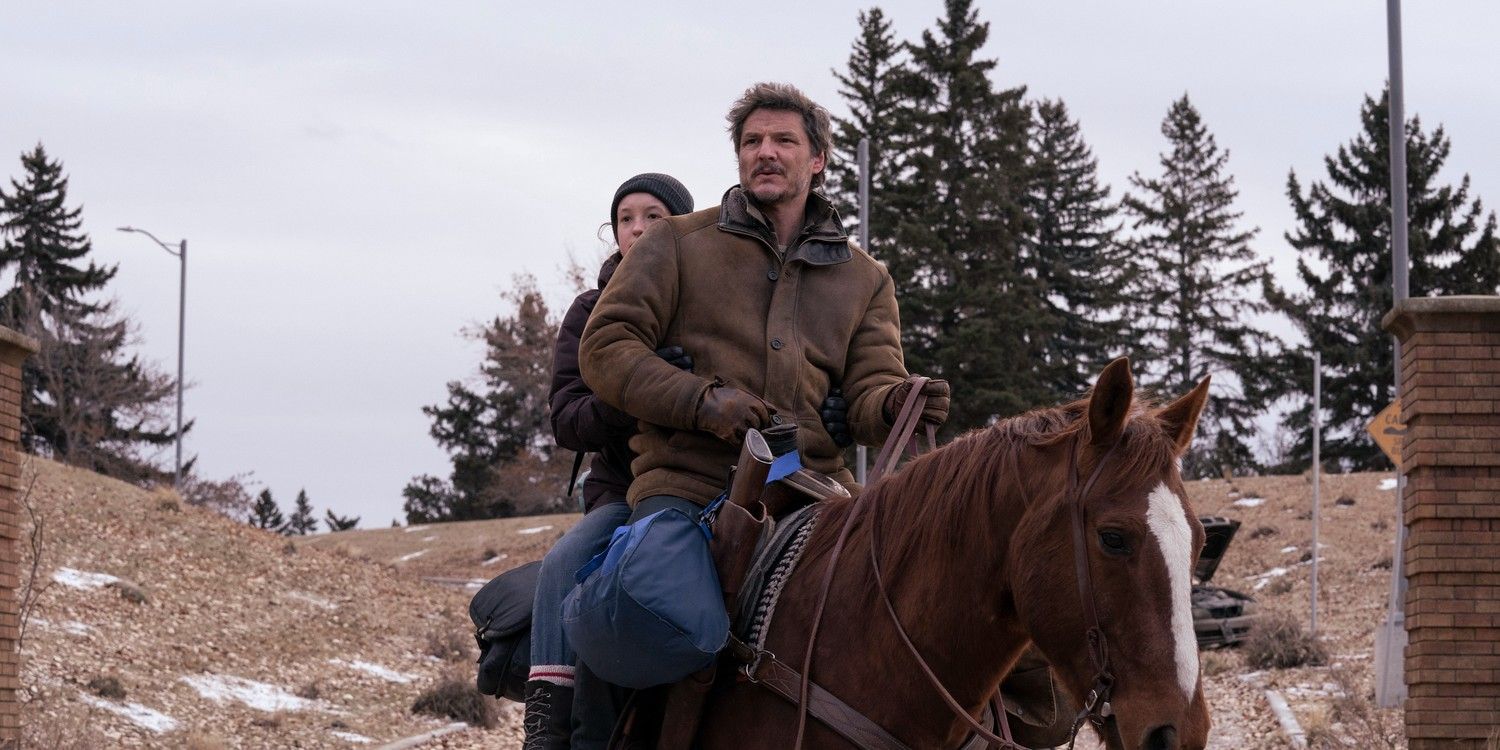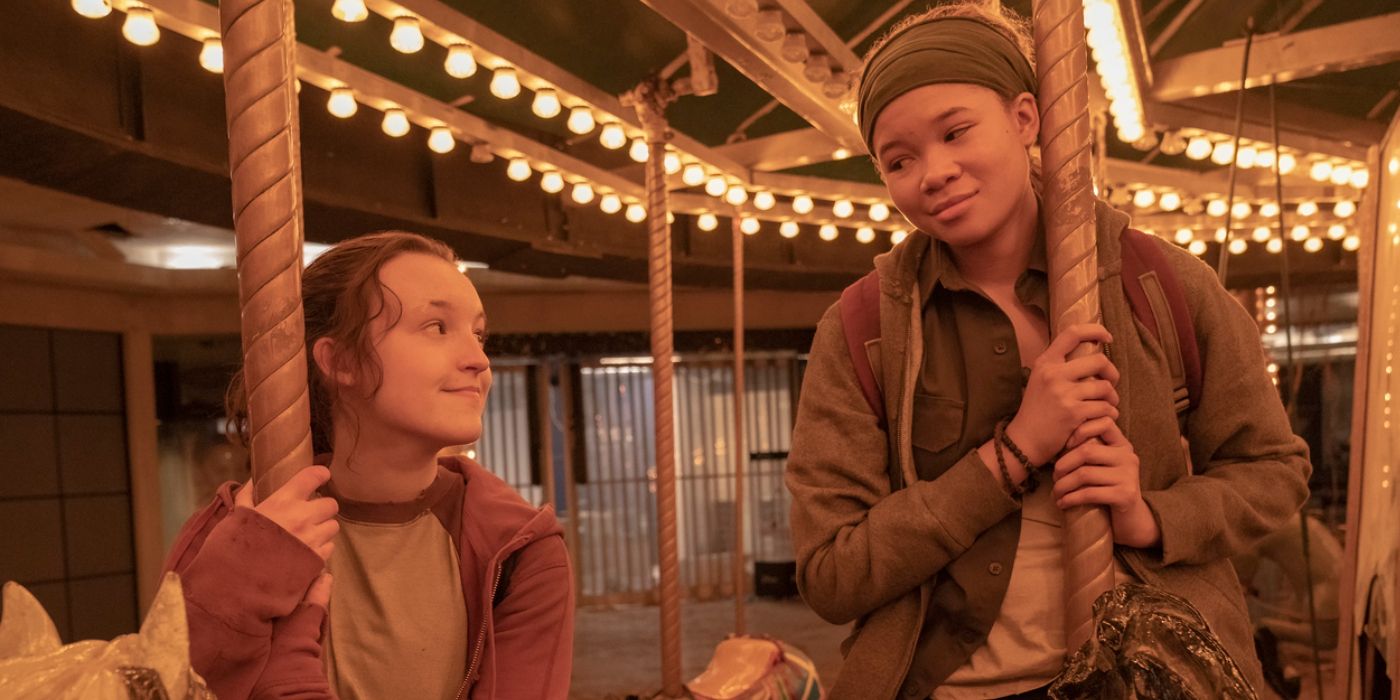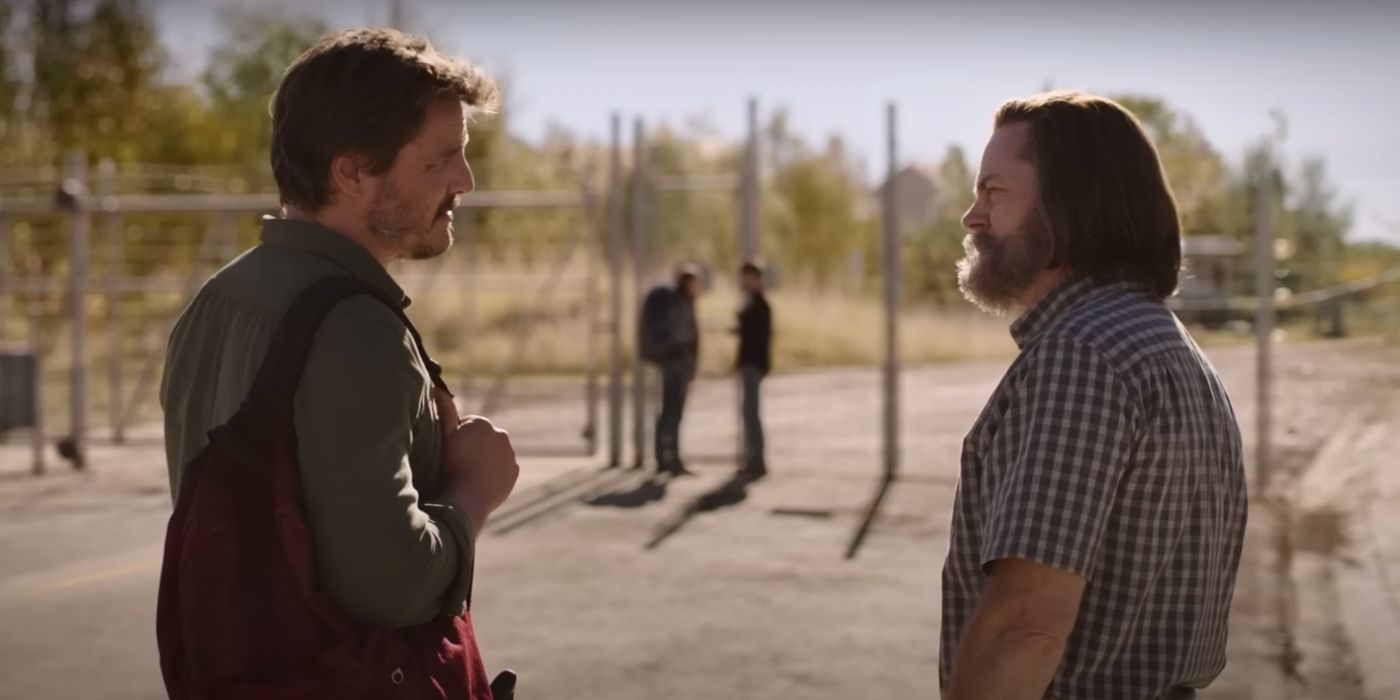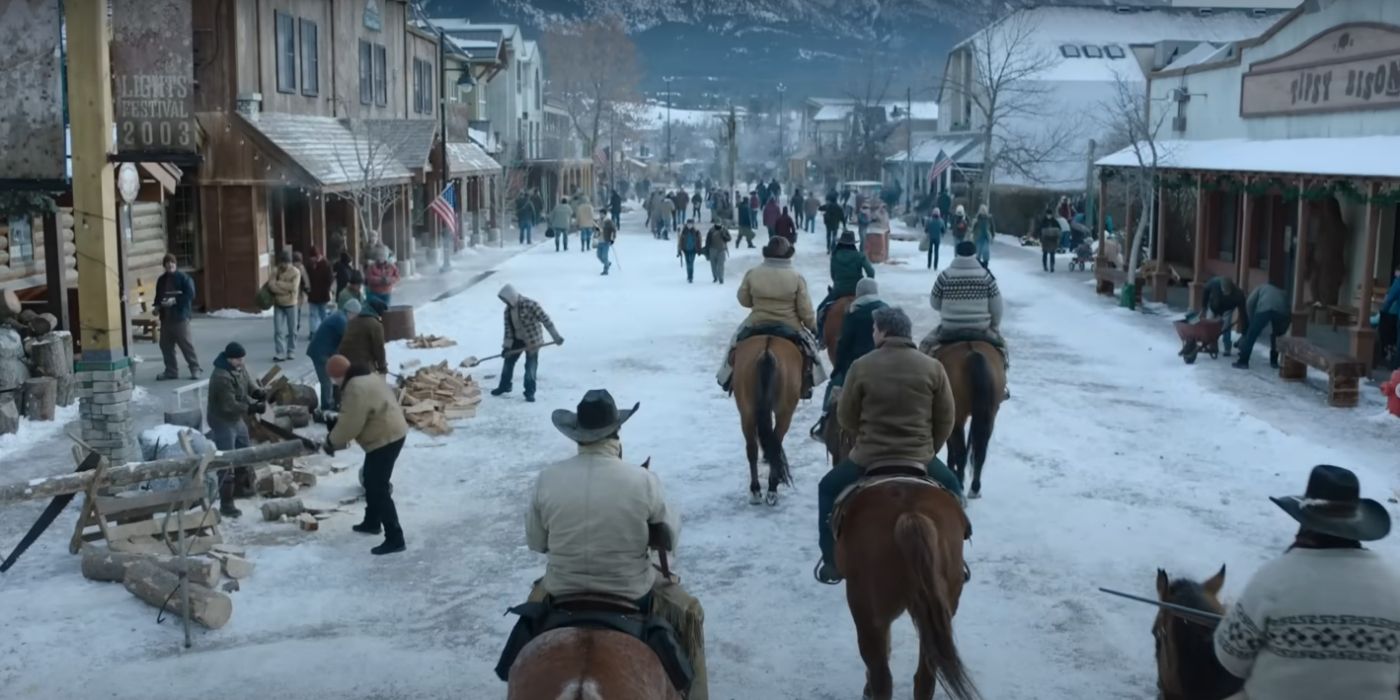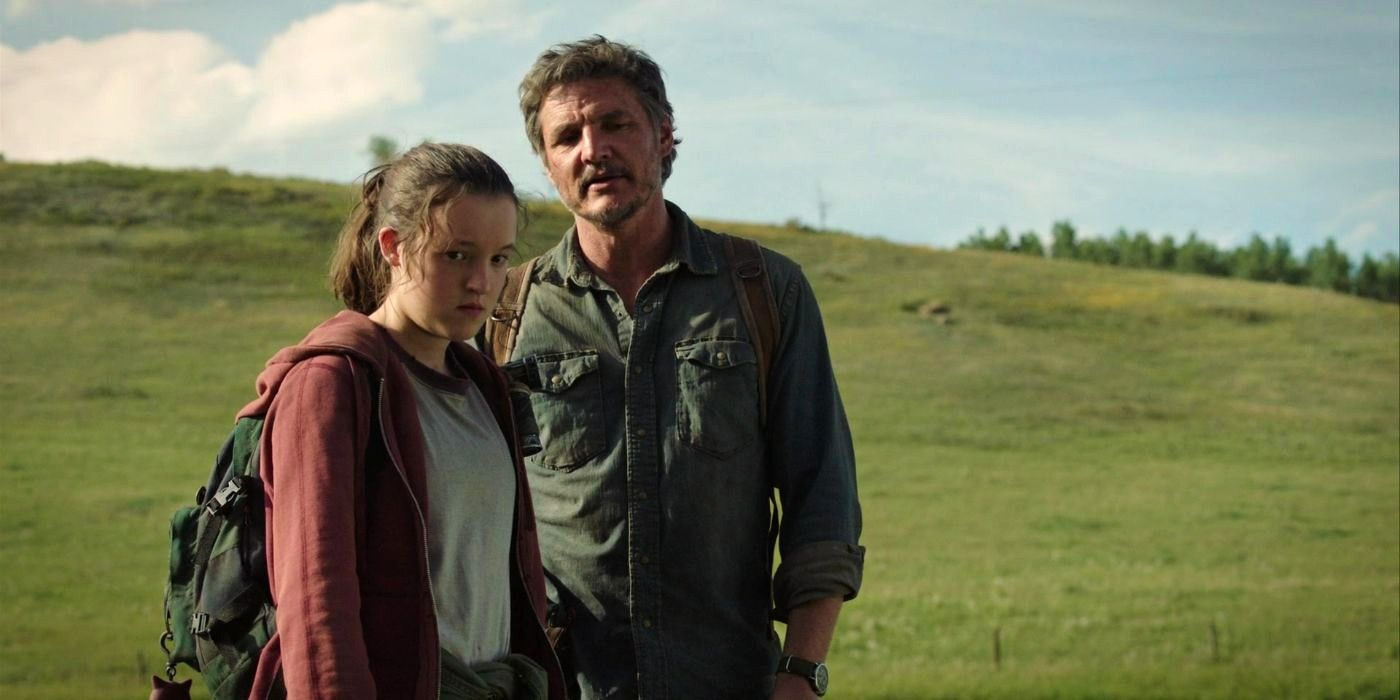HBO's The Last of Us is based on the acclaimed 2013 video game and has not only earned praise but broken HBO viewership records. Joel and Ellie have traveled across America searching for the Fireflies facility, where they can help create a cure for the Cordyceps fungus. Over the course of the series, Joel and Ellie's relationship has grown through tragedy, moments of joy, and absolute loyalty to one another.
The Last of Us brings the world of the video game to life on screen, from Bill's (played by Nick Offerman) survivalist home and town to the Cordyceps-ravaged cities. Each episode has detailed and intricate sets that incorporate Easter eggs straight from the game or elements that hammer home the fact that the world simply stopped in 2003. John Paino, the production designer for The Last of Us, has worked on a variety of projects, including Big Little Lies, The Leftovers, and The Morning Show.
Screen Rant spoke with Paino about working as the production designer on The Last of Us. Paino explains how he got involved in the project and collaborating with Neil Druckmann. He also reveals why Bill's town is one of his favorite sets and Easter eggs they incorporated into the series.
John Paino Opens the Door to The Last of Us
Screen Rant: You and your team are the unsung heroes of this show. In all honesty, you guys have the greatest blend of CG and practical that I've yet to see on a production of this scale, and you're so faithful to recreating the source material while making it your own as well. How did you get involved with The Last of Us, and were you a fan of the game prior to working on the series?
John Paino: I was just communicating with Francesca [Orsi], who's head of production at HBO, because I've worked with them a couple of times. She said, "Hey, there's a show about The Last of Us." I played the game a little bit, but it's very time-consuming. But I had seen and admired the beautiful concept art for it that Neil [Druckmann] and his people did, because it was so cinematic at the time.
When the first game came out, a lot of concept art for games did not have the sense of painterly realism that their concept art had; attention to where the light is coming from and just layers. I keep saying this, but it's true: it looks like art that you would do for a TV show or a movie; really good concept art. It's a good piece of photographic reference to use, so it was just like, "Yeah, who wouldn't want to work on this?" But it was also a little strange for me because, when you think about it, the show's already designed. What are you doing? That's certainly not true, but I looked at the game and the concept art like a reference.
When I talked to Neil, and he directed me to his people in his company, I was more interested in what they had used to base their concept on; their reference for natural disasters and things like that. We got a good amount from them, and then we certainly had our own references and things to put into the mix. All based on the original briefs that are from the game.
You have the script to pull from, but you also have the game. Talk to me about the process of bringing that world to life, because I feel like you go a step further to enhance that beauty even more.
John Paino: There are things that we need to do that the game doesn't need to do. Like when we get into the thick of the disaster, and we're outside of the warm colors and the electricity of life before the infection, if we don't add color, if we don't add texture and things, when we desiccate everything, when we make everything look like that, it's just all going to be black. So we want to make sure there's some color of before and also maybe it's a vaguely infected plant, fluorescent light, just to throw you off.
And another thing to think about is that, you know, in the game they just make paths for the characters, and sure, you can go off and get a first aid kit and stuff. But we are making whole environments because the actors aren't robots, they are not just going to walk. And we need to think about like, "Okay, the camera's gonna shoot from 20 or 30 feet away, we want to shoot through something, what is that thing we're shooting through?" And the camera wants to move. So it's taking the raw material of the game and references, and then we've got to make this in the real world. And to either find those places or create them is as much of designing the game as is the designs as before. Because we don't want to - and Craig does not want to do this - we do not want to just have people walking through a green screen.
Being able to do that, and then pushing for that and us being able to do it was the best thing in the world. Because if most of the interiors are built, all the locations that they're walking through are touched by the art department, they're not just left. And then Andrew and everybody at VFX was incredible, but we're using them to augment, obviously; like a building in the distance, that's how we do that. But if they're walking through something, being able to have them go sit on that thing - all of that, I think, really helped and gave the show a gravitas that just can't be duplicated. And also, in the long run, it's better, because I think it's actually cost effective to have that 20 feet up behind them dressing there.
That's also one thing I really applaud you for, because you make the world that you've created and built feel like a character itself for the actors to interact with, rather than doing like you had said, green screen. Out of curiosity, was there any option to do something like the volume that a lot of shows had been doing more recently?
John Paino: We never discussed doing that. We did a pretty good job of finding places that would pass for the East Coast of America and the various locales. We couldn't find, you know, things like Bill's Town we created from scratch, because we couldn't find them. So it was great to know, like, if we can't find it, we're gonna build it - it has to be right. And it was refreshing, it was great to work with them. And then other things we were like, "Okay, this is close enough. Once you add stuff and we augment it in VFX, it will work."
One thing that I love about this show and what Neil's done with the show is that he's taking the source material and he's stayed faithful to it, but he's also expanded upon it. Can you talk to me about working with him as a collaborator to expand the world visually?
John Paino: Well, I think in the scripts - it was already done in the scripts. And working with him was very interesting, because he does come from a world where they could just make it, right? If I need a can of beans, someone's drawing it and putting it in there and it's going to be exactly how the can of beans is. Us, we have to find that can of beans, and the can of beans has to do certain things or be a certain way. So he wasn't used to that, really, but he was totally like, "Oh, yeah, I get it." But he actually has such a director's eye - obviously, he created the show - he has such a cinematic director's eye it was just like working with a director.
The thing is, though, he's used to like, "Okay, they're gonna walk across a two by four over a chasm." But he was aware of how the show certainly has a realism to it, nothing's unrealistic. I was really impressed with how he's just like a director. And that's why the game is so cinematic, it's concerned with details, and movement, and staging, and lighting. So it was a joy, really.
Honestly, some of those scenes feel like they're taken straight from the game just expanded, they look beautiful. Are there any Easter eggs within the game that you incorporated into the show? And if there are, what are some of your favorites?
John Paino: Oh, there's definitely - they're mostly props. Like Joe's watch and the gun, they had to be spot on. We had such a great prop master and his team. If they couldn't find it, they built it. The watch, Ellie's switchblade, you had to have those, right? We would have been drummed out of civilization if we didn't get those things right. There's certainly things like the Fireflies logos and stuff, and there's some things that we came up with that maybe someday will be considered Easter eggs, little nods and codes here and there. But I think my favorite was they did such a good job with her knapsack, getting all the little things, the little dolls and things and the little emoji-like creatures that hung on it. They did a great job with that.
Now, in The Last of Us, the world essentially ends in 2003. Can you talk about capturing that specific era in the details on the sets?
John Paino: So it wasn't so much that we made a nod to it - I mean, a point of our work is that we're always making sure that there's nothing anachronistic in it. But there wasn't anything that we wanted to push, like, "Oh, let's have an overabundance of technology." That's not going to exist. It was more about having colors that won't exist anymore. Like Austin and the town that they escape to, those colors, the neon. Having lived in Texas for a while, it's like even in the smallest of the small towns outside of anywhere in the middle of nowhere in West Texas, the main streets have got neon.
So those colors, we're never going to see again, because there is no electricity; and the kind of colors, like lavenders, they don't exist really in nature. So as far as like 2003, it's more about what happens when all of the trappings of civilization shut down, it was more about color and electricity. And then that affected the rest of the show in that sense. Like, we have all these interiors with no electricity, how do we light them? Because we're not going to do anything unrealistic. So we always tried to make sure that our sets had a window in the right place or something, water on the floor that reflected a light, all of that. So it wasn't so much the era, it was the lack of resources that we were more interested in.
That thought process is incredible, mainly because you take one thing and then you see how that trickle effect works throughout the set.
John Paino: It's very much about like - Craig and Neil were sticklers for the idea that we're not going to just do something because it's cool; we're not going to do disaster porn. And my thing was always like, well they're crawling around in a subway, and they made a battery. They can make batteries, right? Pretty not so great batteries, but you make batteries that are okay. How is this going to be lit, you know? And they're always going from A to B, so there's that too - how can we make sure we see these people? And it's in the script too, certainly there's a thought about making sure that it's realistic.
Do you have a favorite detail that you guys have included that made you especially proud?
John Paino: Ah, I think there were so many details. Prop-wise, I thought some of the kiosks, some of the furniture and things that we made for the QZ were really cool. One of the things that Craig loved when I met with him, I had these amazing pictures of chairs. A photographer went around in Singapore and Hong Kong and took pictures of chairs behind restaurants. You know, where the guy goes out to smoke, and it was a metal folding chair and the leg broke, and so we wired a different kind of leg to it in; the seat fell out, so we put a phone book there. And so these chairs, you know - I'm not going to buy a new chair just to go sit and smoke in, so they literally rebuilt these chairs with whatever is sitting around in the alley. And he loved that, he was like, "That's our aesthetic." So things that our prop master made or the set dec made that were chairs.
I think the radio room in episode 2, the shortwave radio room, all that stuff made, which was real. I think one of the funnest things, something that was an interesting nod, the antenna behind the shortwave radio operator was based on how the French Resistance in World War II would hide shortwave radio antennas from the Nazis. They basically put four nails in the wall and just kept coiling the antenna wire. FEDRA would know that you had a radio there, because they'd see this big antenna, so they did what the French Resistance did, and we did that on the wall. So that was one of my fun things, because they're kind of in a slum, so how do we hide? Even though they're keeping us safe, how do we hide these things that they would confiscate?
So there were a few things like that, I think that's one of them. I think just the props that were made, that had to be remade. The FEDRA and the Fireflies' maps, we made sure those things, you know - you're not coming to Staples. [Laughs] They're using cardboard boxes and it's been used so much it was like cloth it had been so worn. So you know, that attention to detail, we had such a great crew, they were able to meet the bar that Craig and Neil set. Bigger built things would be Bill's Town, which is like, we built so much it's hard to say; it's like you have three kids, which one do you like the most?
Bill's Town was incredible.
John Paino: That was one of my favorites. Because I knew places like that growing up in New York, there are hamlets like that. And my parents dragged me to like - their idea of keeping us educated was dragging us to Colonial Williamsburg and watching guys dip candles. So I knew all of that now, and there are these towns like that where people live where they just keep it like that. That's amazing. Craig referenced Bedford, Massachusetts, and it's just an intersection with this monument and colonial whitewashed homes built during the colonial times. The people who founded that town were rich, so they lived right in town.
The Last of Us has this inherent dichotomy of hopelessness and beauty with the world with Ellie really appreciating it. How do you capture some of the more fun and beautiful elements of this world while still keeping the horrors of it?
John Paino: Well, you know, that was really hard. I mean, to not veer into what we call disaster porn was hard, because there is an incredible beauty in decayed walls and things. I think some of that is in Ellie's reaction never having been out of the QZ and her experiencing things. Again, we looked at a lot of references of wallpaper, but also sometimes we would often have wallpaper that hung down so much that it just became menacing.
So, it's hard, it's almost like a case by case thing. I think in some instances we might have veered a little bit where it's too beautiful, like old walls in Italian villas that are just gorgeous if you like that kind of stuff. But then we would make sure it was wet and snotty looking, so there's a repulsion to some. The problem is the art department wants to make everything beautiful, even if it's horribly beautiful, so it was tough. Usually Craig would say, "Spray it down more, because it might be too beautiful." It was tough, it's tough to find that fine line.
It's a perfect balance that you guys do, though, because, yes, certain things are beautiful, but you can tell the horrors of the world have kind of taken over a little bit.
John Paino: That's why Bill's Town was so great. It was just a beautifully written episode, but it was also so great to do a respite of everything decaying and dirty and everything. I thought it was just a really great respite, and also, the whole show’s about this stereotype of America that's not going to come back, you know, Norman Rockwellian. A version of that America never existed, but here is this guy trying to hold off the world. So it was a great metaphor, the town itself being kept like a museum, right? And or at least his home. And then, you know, him being like that.
Were there any changes that you guys made from the original game that stand out for you?
John Paino: You know, we didn't really make changes, we just would just say, "We're going to take it in this direction," or Craig would write the script. I mean, the changes are in the script; there was no Frank and Bill relationship, right? So wanting to make the world more organic, I guess those would be the changes in the instances like that. And like, when Joel meets his brother again in the town, thinking, "What does he do? What are these people doing? What have they been doing?"
Or when they go into a place, making sure - a lot of times the places are what we call ND, nondescript, right? It's been beaten down and worn down and all of that; we want to give a story, this was a beauty parlor. I would joke that we're the show of the cinder block rooms, we're always going into cinder block rooms. So, okay, let's have a cinder block room where the walls have caved in, that's where we see that infected that Ellie stabs in [episode] three. I think those are the instances, because maybe in the game it wasn't like that. So we're trying to give it a realism that - the game had beautiful atmosphere, and beautiful settings, but they of course concentrated on the faces and making sure the hair moved. So we maybe can have a little fun with always making sure that you get the sense that nature's pushing in on everything.
I know that the game's original cast has cameos in the series, were you able to talk to them and see their reactions when you guys brought this world to life?
John Paino: Well, the thing is I'm not on set a lot, if I'm on set that means there's some problems, and I want to run away from the problems. [Laughs] I'm just kidding, but it was fun to see everybody. Some things it was more like, "Oh, I gotta walk through this mud," but it was fun to see their reactions, and also just to see them climb on stuff. They were such troopers and they really dug it.
For episode 5, you guys actually use tunnels for the underground scenes, can you talk about creating the sets in the tunnels?
John Paino: We actually shot some in a brewery, under it, that we had scouted when we just started, and we're like, "We've got to use this for something." And so normally - it's funny because I mean, usually you build the tunnel. You build the subway because they're dangerous, they were unsafe, there's no exits if there's an emergency for the crew. But we went back to it and it was like, this is perfect, it has big areas. We built parts of it on stage, there weren't doors in different parts of it or walls so we would add a door or a wall. We certainly painted all the murals.
But the thing was, it had enough space to have a sense of the settlement, that you could actually live down there. And you know, we added the venting, obviously, up top that is an excuse for light and water to get down; again, how does light get down here? Maybe they have an hour or two of electricity, but you need light. Yeah, that was one of our few location interiors that we used, actually
John, if I were to zoom in on your background, would I be able to get any spoilers for The Last of Us? Totally kidding.
John Paino: [Laughs] This is a different show. This is the show I'm on now. Although I hope - we did so much concept art. I hope someday they let us put it out there.
I certainly hope so. This is one of the best video game adaptations ever made, and part of it is because the world it feels so real and lived in. How did you create that authenticity as a production designer, and is it easier for you to build a world that's adapted from something like a video game? Or is it easier to do something completely original?
John Paino: I think that's a good question. Well, the way we were able to do it is because we had a really talented crew who stepped up and made it happen, and they're all craftsmen and artisans. And again, we had amazing subject matter in the game, and the heart put into the game, and the world, in the people. Half the people in my crew were like, "Oh, I played this game, I love this game," you know? So the enthusiasm and their talent was what made it happen.
I don't know if there's a difference between working with the game, I think it depends. I think that they both have equal challenges. But I think that if the game is about jumping, and running and shooting - which Craig and Neil took some of that out - the one thing about The Last of Us, is it's not really about the killing. In fact, it's about the surviving part of humanity. And that's why I think it appeals to people and why it's more like a movie, more like a film, more like a story or a novel.
In this particular case, The Last of Us was unique, and was no different from just creating the world. Because it was the same as if you were - it's such a good, let's call it a novel, it was such a good novel. It's no different than doing, you know, A Tale of Two Cities; it's so rich. So I don't think it was any different than doing something from real life because it was such a good, real-life thing. It was real.
About The Last of Us
Based on the wildly popular 2013 video game of the same name The Last Of Us takes place in a post-apocalyptic world ravaged by a fungal outbreak. The series follows Joel, a hardened smuggler, tasked with escorting 14-year olf Ellie across the ravaged United States in hopes of finding a cure.
Check out our other The Last of Us interviews here:
- Craig Mazin & Neil Druckmann
- Pedro Pascal & Bella Ramsey
- Gabriel Luna
- Merle Dandridge
- Jeffrey Pierce

